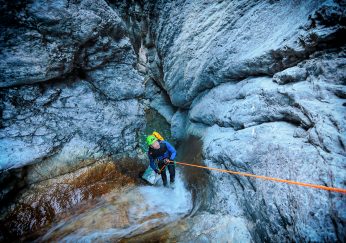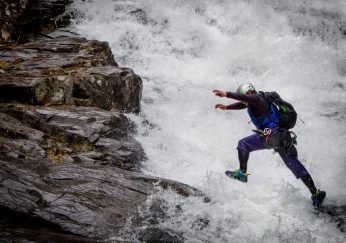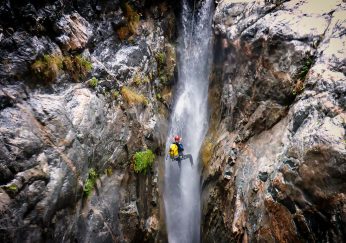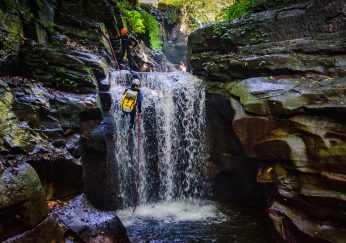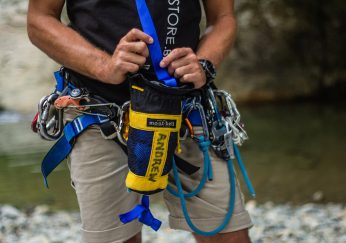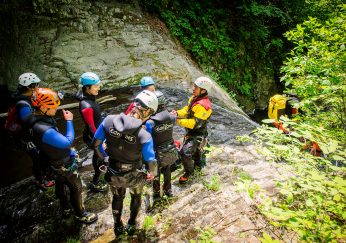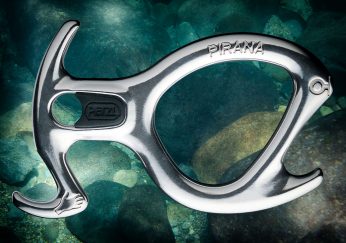A little over a year ago, I began discussing a new canyon gear idea with my friend, Ross Fraser. Inspired by the latest onslaught of canyoning-specific equipment like the Kong OKA and the AV Mazerin, I started thinking about what on my harness wasn’t specifically designed for canyoning. What piece of equipment did I use the least? Which one hasn’t really been modified? Eventually, I came across my Canyon Quickdraw.
Some say the quickdraw is obsolete in canyoning. We don’t need it anymore. There’s other ways of doing things, and it just isn’t necessary. But since I first put locking mini-HMS carabiners on a 17cm nylon dogbone, I haven’t been able to shake the thing. It’s damn useful at times. It’s great for securing something under load that I may need to unhook, such as a releasable figure-8 block, or using it as a spacer in hauling systems. When I’m out of working carabiners, I can pull one off my quickdraw. I find it most useful when I’m linking unlinked, in-line bolts. Still, that’s not all that many tricks to be carrying the thing for its own sake. Being a fan of greater utility, I wondered if there was a way to improve the Canyon Quickdraw concept.
| Common Canyon Quickdraw Uses | Advantages (+) / Disadvantages (-) |
|---|---|
| Securing a releasable block to the belay | + : Prevents accidents from people rappelling on the pull-strand. + : Can be used to secure block form accidental release + : Can ben used to prevent dropping the Figure-8 |
| Linking unlinked, inline boys (ex: vertically aligned bolts) | + : Quickly creates redundancy between the two bolts – : Does not equalise the load between the bolts |
| As a “Spacer” | + : Creates extra room, often to accord rigging clutter + : Useful for extending a person’s attachment to the belay + : Particularly useful for converting a rappel line into a haul line as the quick draw can be clipped to “reach past” the block / MMO to the rope |
Changing the snap-gate carabiners to locking carabiners on a quickdraw was a brilliant move. Kudos to the guy who first started doing that. The thing that hasn’t really been changed is the dogbone. Essentially it’s a 10-25cm sling with a hole for a carabiner at each end. Talking about this with Ross, we wondered if it would be beneficial to add a place to attach another carabiner. If there was a place for another carabiner, how would we use it and where would it be. We decided an extra hole might be useful for adding a second rappel line, a top belay, or attaching a handline to when the quickdraw was used to link anchors. We tossed around some design ideas, and we drew up both a “T” design and a “V” design that would essentially add an extra “arm” to the dogbone. Both of these designs called for fully-rated sewn loop (~22kN), which is folded in a way to create the extra arm.
I contacted the guys at Aspiring Safety Products in Christchurch, New Zealand to ask their opinion and see if they’d make us some prototypes. After some consultation with Lindsay Main, he suggested we go with the “T” design for better versatility. Engineering wise, Lindsay said the arm would likely be sewn with 3 bar tacks on either side of it. Each bar tack on a sewn sling will fail at roughly 4 kN. This is interesting because at roughly 12 kN (the threshold of survivability), the bar tacks on the arm would fail, the stitching would then open up until it reached the fully-rated 22 kN loop. What does this all mean? The design of the extra arm would have shock-absorbing potential. This would be particularly useful in securing handlines to the belay, where dynamic loading amplified by vector forces is a legitimate concern.
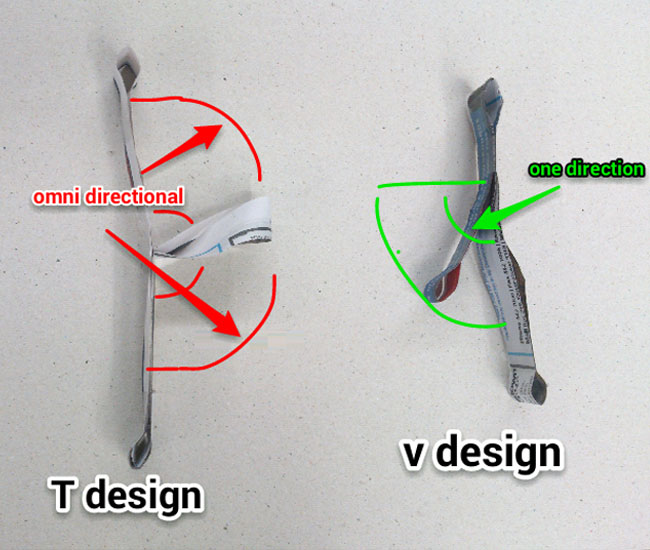
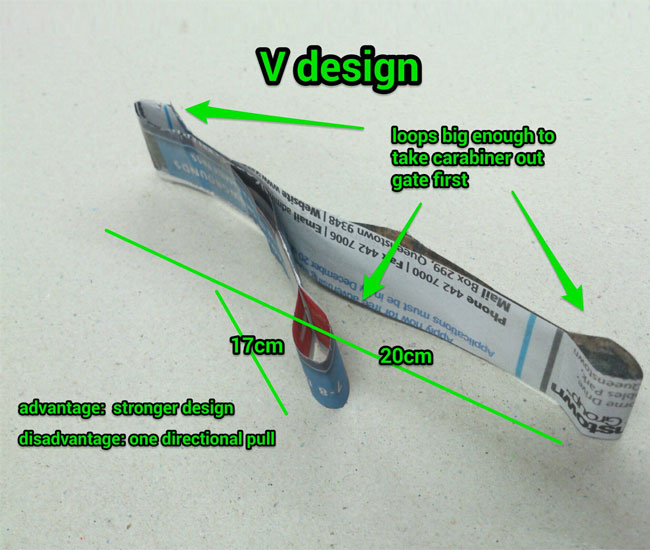
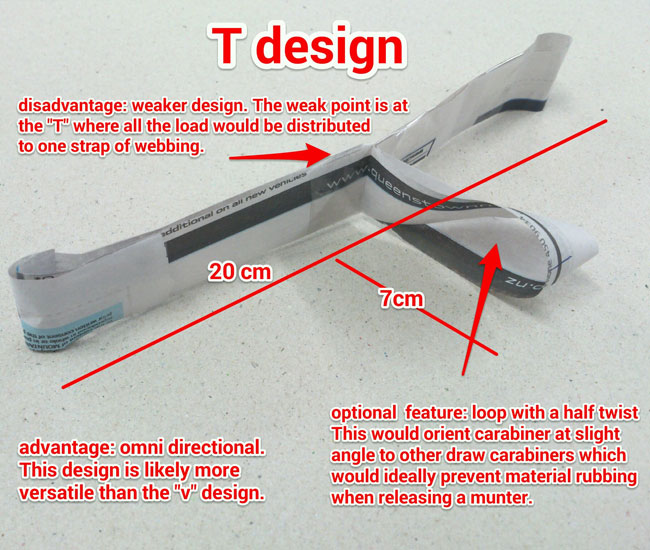
After a few weeks, the working prototypes arrived in the mail. We were like kids at Christmas opening the parcel. The workmanship was top notch, and Lindsay’s work far superseded our expectations. Being the first prototype, we knew we’d probably get some things wrong, and we were probably a little over zealous in our 20cm length request. Nonetheless, we were ready to put it into action.

I can’t say it was an immediate triumph. It proved to be useful when adding a second rappel line or top belay. The arm brought these two techniques away from the master carabiner, and it generally made the set-up cleaner. I used it a few times to link the handline to the rappel belay, but the jury was out on its versatility. To add to matters, the manufacturing of the prototype didn’t go perfectly, so the arm was offset from the middle. This required a bit of thought when deciding how to use it.
I eventually decided to ask my friend Laurent Poublan, Head Technician and CEO of ICOpro, his thoughts about the T-Quickdraw. His feedback proved to be very valuable in illuminating a few potential issues. One of the most common reasons we use quickdraws in the canyon is to secure a releasable figure-8 block to the belay. This prevents accidental release of the figure-8, and it guards against a teammate rappelling on the wrong side of the block. It is also useful in ensuring you don’t drop the figure-8 while rigging the releasable block. Laurent asked what would happen if the quickdraw was used to secure the releasable figure-8 block AND it was used to secure the handline to the belay. When the handline comes under tension, this will pull the quickdraw away from the belay, potentially making it difficult or impossible to detach the other arm of the quickdraw from the figure-8. This is particularly problematic if you must release someone stuck on rappel. Uh-oh.
Upon further consideration, I realized the same could happen with a Munter-Mule-Overhand (MMO). Suppose the quickdraw is used to link two unlinked, inline bolts. The quickdraw carabiner on the lower bolt is then used to rig an MMO. Finally, the extra arm of the T-Quickdraw is used to secure the handline. Again, we have a similar problem as the releasable figure-8 block. When the handline comes under tension, the quickdraw is pulled away from the belay. This could pull the quickdraw carabiner with the MMO upwards, jamming the MMO against the maillon/rap ring. The jammed MMO could be impossible to release. Uh-oh x2.
In short, the T-Quickdraw may not be as useful/versatile as Ross and I originally thought. The jury is still out on how much it could contribute to the canyoning world. Likely the answer is “very little,” and it may be just another idea that didn’t have the gusto to make it.
In my discussions with Laurent, he asked me if I could think of a way to use a quickdraw to create a central point between two unlinked anchors. The T-Quickdraw couldn’t certainly never solve this problem. The bolts and rappel line would have to be in the just the right position to make this possible; I would guess less than 1% of bolt configurations would allow it. However, Laurent’s question got me thinking, and maybe there is a type of quickdraw that could do just this…
